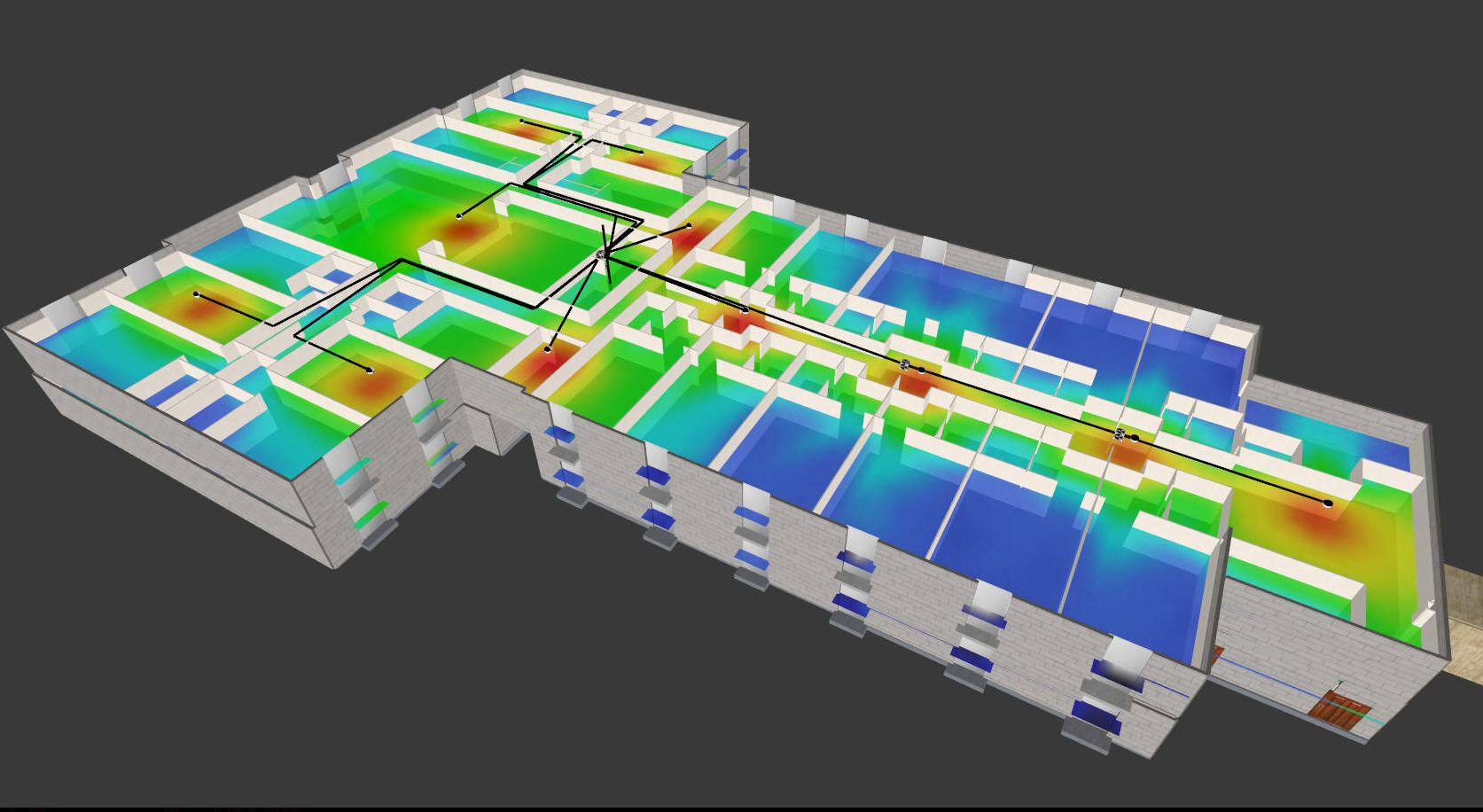|
Passive DAS
systems typically
use passive
components like
coaxial cable,
splitters, and
diplexers to
distribute signal,
and Unlike active
DAS, they use
bi-directional
amplifiers to
rebroadcast signal
from the macro
cellular network
using a donor signal
on the roof.
There are
limitations to the
reach of passive DAS
solutions. Because
they use coax cable
to distribute
signal, signal loss
is higher than with
active DAS. The
further away the
antennas are from
the amplifier, the
higher the signal
loss. The signal
loss results in
lower downlink
output power.
But the
advantages of
passive DAS
solutions are
considerable. In
particular, they are
considerably cheaper
than active DAS.
Because they
typically
rebroadcast the
macro network’s
signal, there is
less need for
carrier approval and
coordination. In
fact, if the
amplifier systems
are classified as
“consumer” boosters
by the FCC, they can
be installed without
any pre-approval or
coordination with
carriers. This means
that there is no
need for lengthy
extra bureaucracy,
and deployment times
can be as quick as a
few weeks.
Whether active,
hybrid or
passive DAS is the
right choice for
your building
depends entirely on
your circumstances.
The coverage area
required, the design
of the building, and
the budget and
timescale for the
project, all affect
your decision.
Office Space
An electrical
design firm had poor
cell reception and
needed a Passive DAS
system to provide
cellular coverage
throughout their
design space. The
solution was to
implement a two
system Surecall
Force 5 deployment.
Design
Apartment
Complex
Four story
apartment complex
needed cellular
coverage on 1st and
3rd floors. Design
required four
WilsonPro 70 Plus
Signal Boosters.
Hotel
The design for a
75,000 square foot,
four story hotel
required one
WilsonPro 4000 on
each floor with 16
dome antennas to
provide the needed
coverage and
throughput. The
WilsonPro 4000 was
selected due to its
unique design which
includes four
bi-directional
amplifiers or
boosters packaged
into a single
chassis.
 The
WilsonPro 4000
passive distributed
antenna system is a
wall or rack
mounted,
multi-amplifier cell
booster that
incorporate four
separate signal
amplifiers feeding
multiple indoor
antennas. Designed
to provide enhanced
in-building cellular
coverage for all
commercial spaces,
including hospitals,
hotels, warehouses
and offices, the
WilsonPro 4000
amplifies weak cell
signals to provide
reliable voice and
data
coverage–including
4G – to inside
spaces where signals
may not penetrate.
With new eXtended
Dynamic Range (XDR)
technology, the
amplifier never
shuts off due to a
strong outside
signal or changes in
outside signal
strength, another
reason to choose the
WilsonPro 4000. The
WilsonPro 4000
passive distributed
antenna system is a
wall or rack
mounted,
multi-amplifier cell
booster that
incorporate four
separate signal
amplifiers feeding
multiple indoor
antennas. Designed
to provide enhanced
in-building cellular
coverage for all
commercial spaces,
including hospitals,
hotels, warehouses
and offices, the
WilsonPro 4000
amplifies weak cell
signals to provide
reliable voice and
data
coverage–including
4G – to inside
spaces where signals
may not penetrate.
With new eXtended
Dynamic Range (XDR)
technology, the
amplifier never
shuts off due to a
strong outside
signal or changes in
outside signal
strength, another
reason to choose the
WilsonPro 4000.

Small Hotel
Passive DAS
Design in three
dimensions using
iBwave
Large
Residential
The design for an
11,000 square foot
home required two
WilsonPro 70 Plus
Cellular Boosters
for the Passive DAS
system. Panel
antennas were
mounted above the
ceiling; thus, the
aesthetic of this
high end home were
preserved.
Design Process
We use
iBwave as
the basis of our
Computer Aided
Design and Keysight
Nemo Walker
Air for our
site surveys and for
design verification.
Contact Us for a
Passive DAS Quotation:
RHO
Wireless
6804 Genstar Lane
Dallas, TX 75252
972-985-0485
Sales@rhowireless.com
|